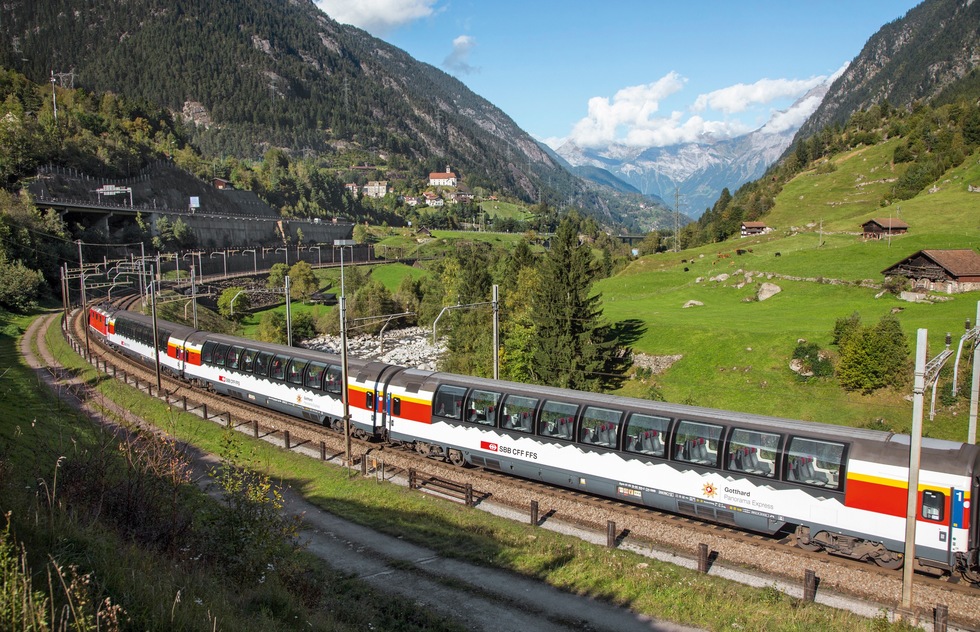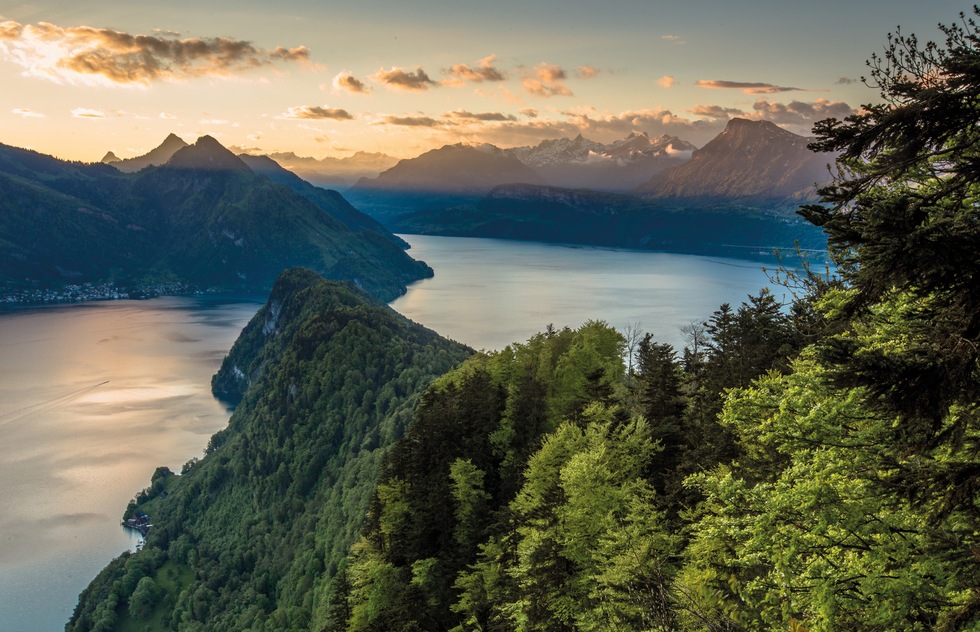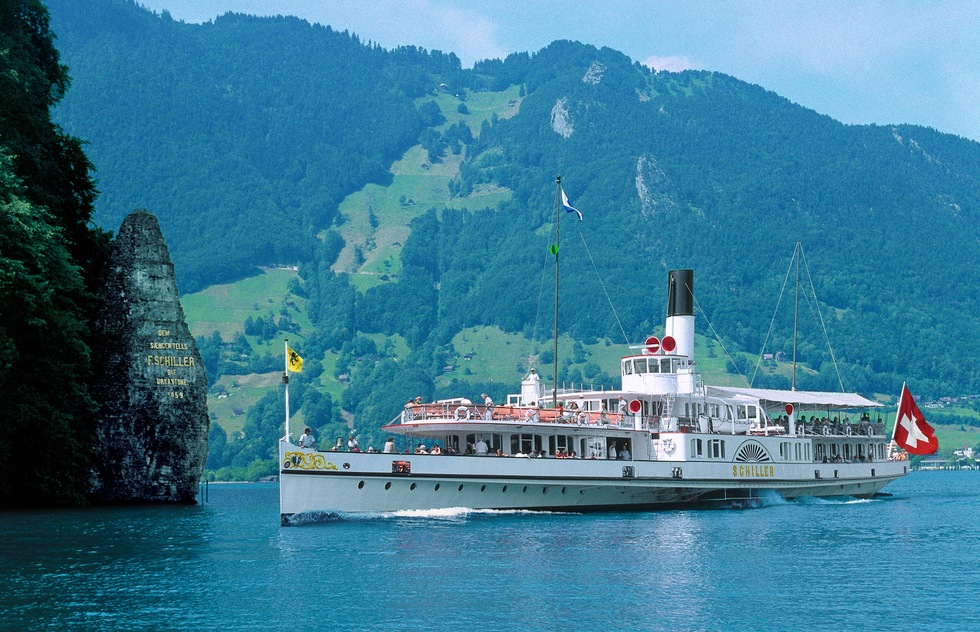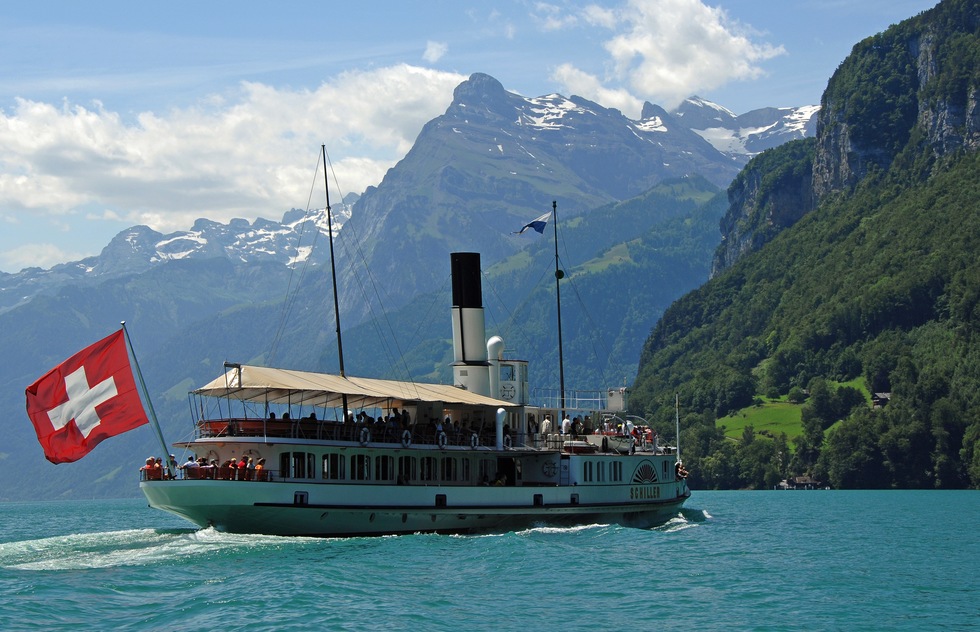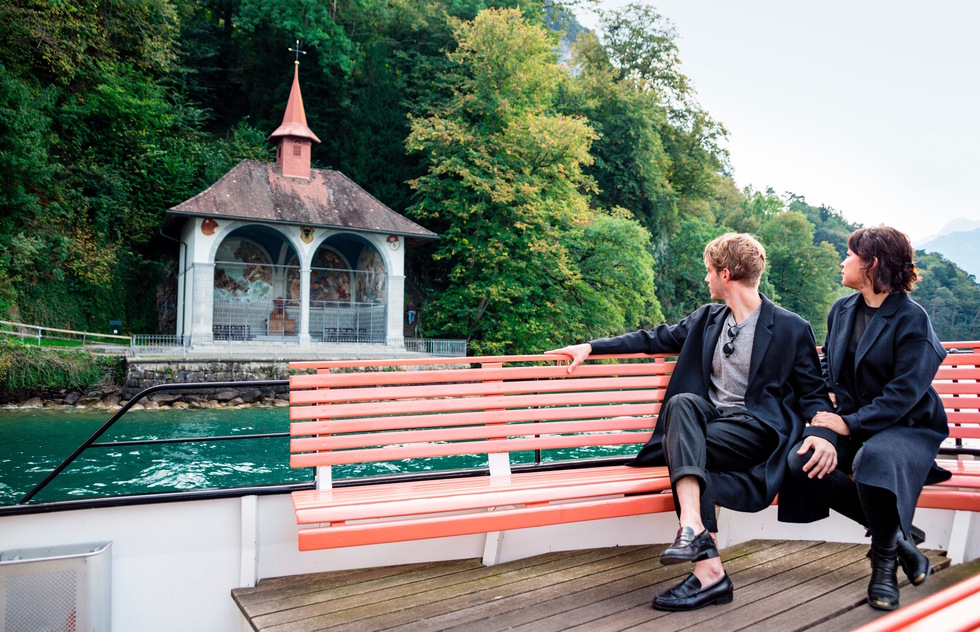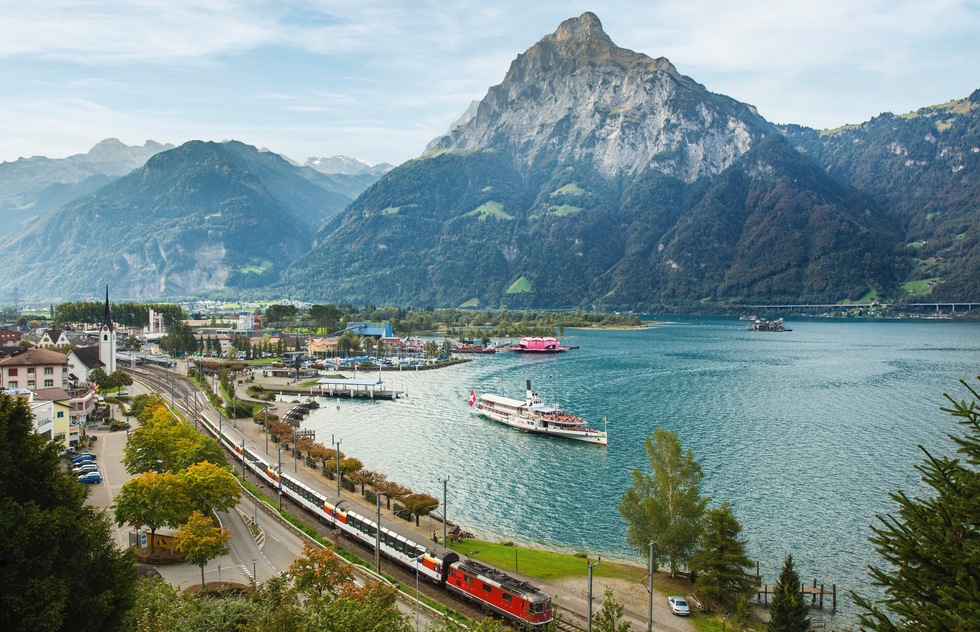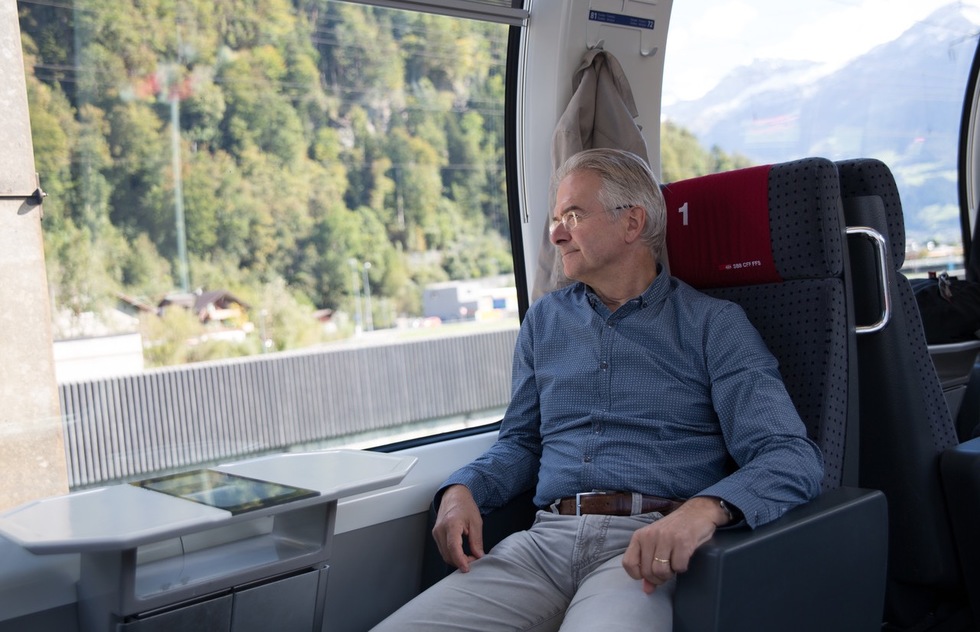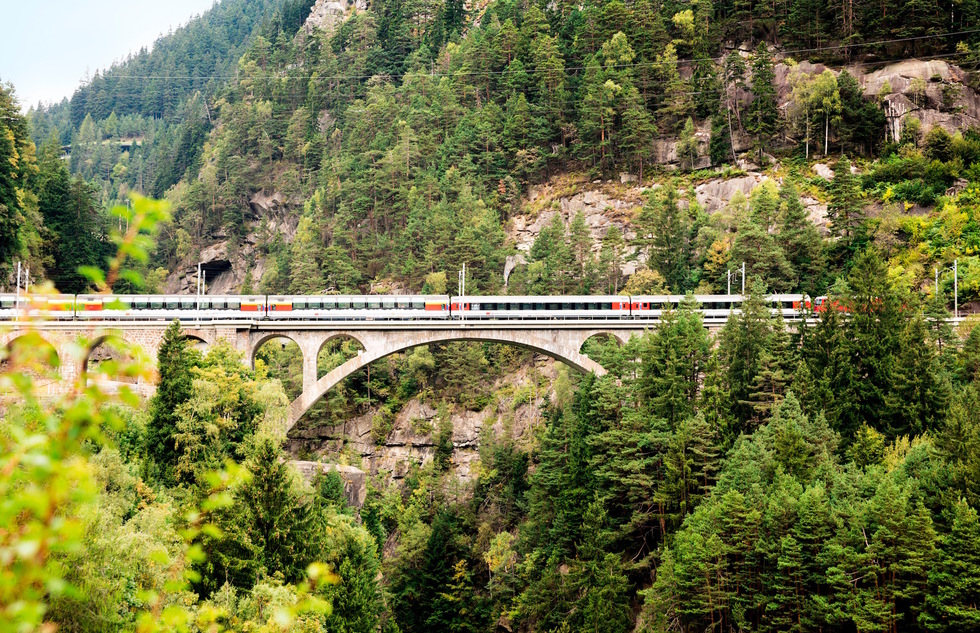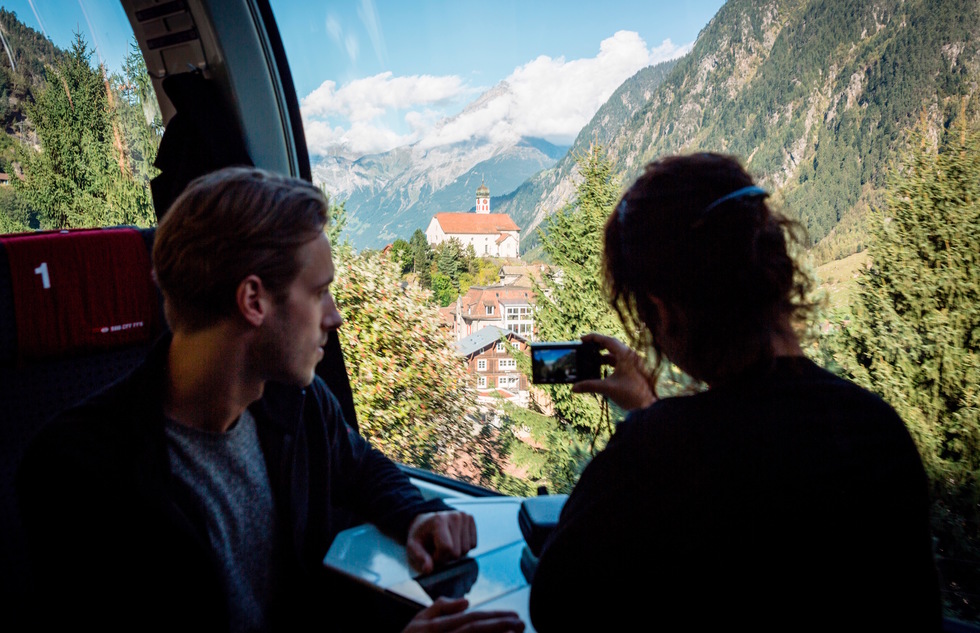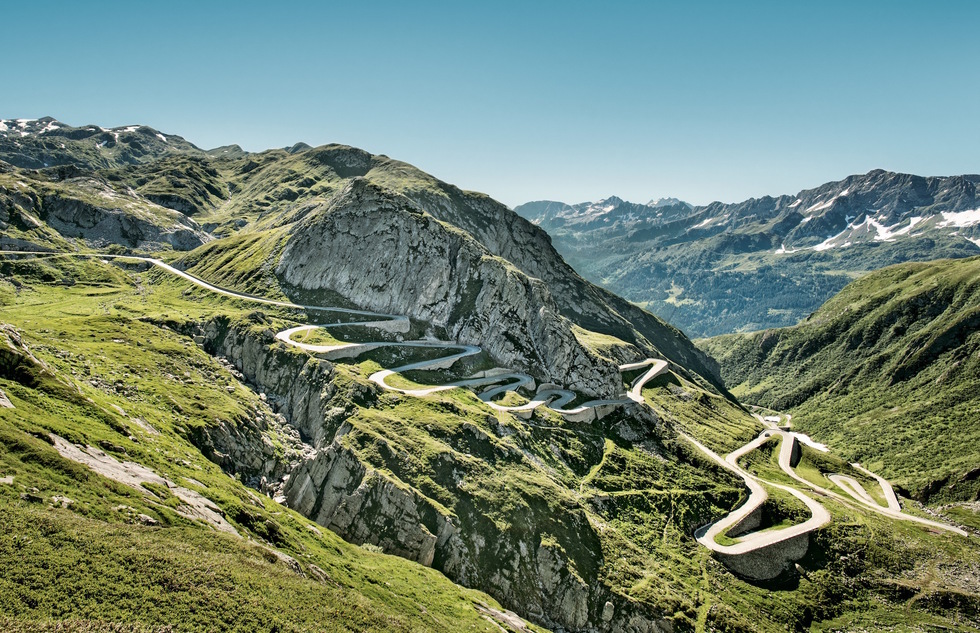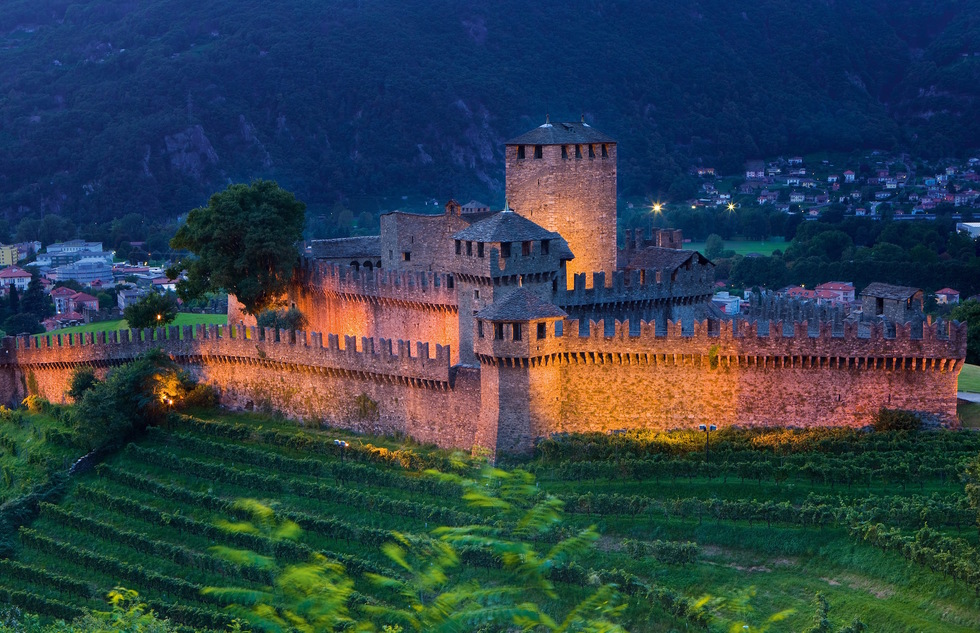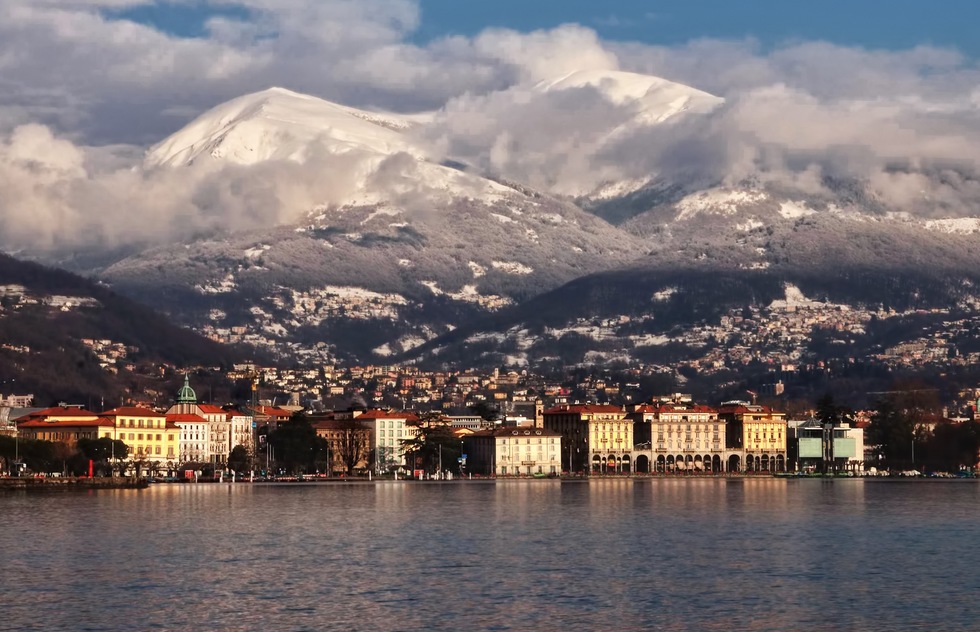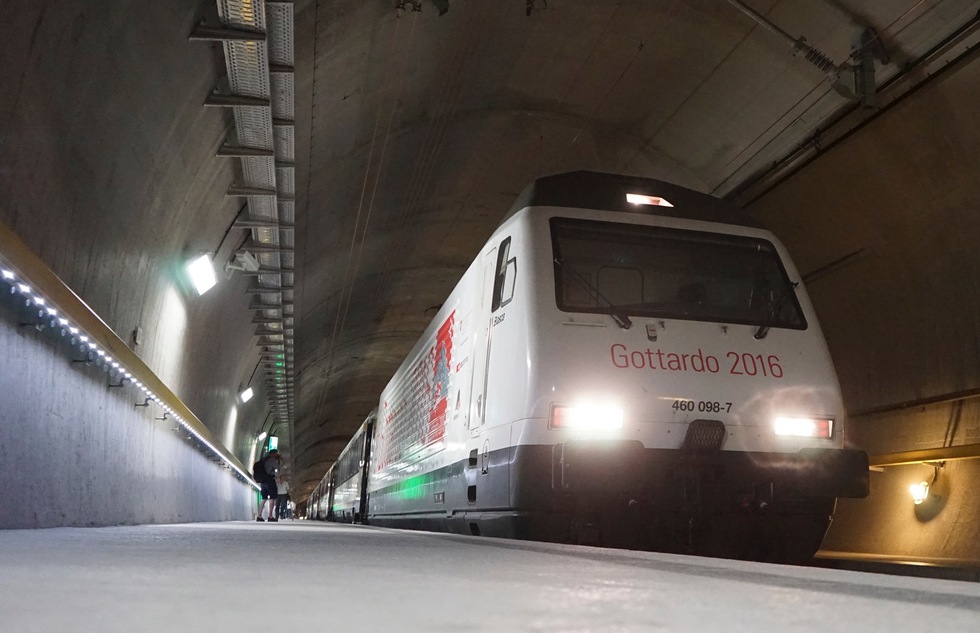Crossing the Alps via the Gotthard Panorama Express
By Mark Orwoll
The former William Tell Express was one of the crown jewels of Swiss travel. The train would decamp from the placid banks of Lake Lucerne in central Switzerland, clamber some 5,400 tortuous feet up the narrow Reuss Valley, shortchange the pinnacle of one of the Alps’ fiercest massifs by way of a century-old tunnel, and ultimately emerge in sunny Ticino on the “Mediterranean” side of the mountains.
But in December 2016, Swiss Federal Railways (SBB) opened a new tunnel—in fact, the longest train tunnel in the world—making the treacherous old line obsolete. Train lovers wondered what would become of the fabled William Tell Express, but there was nothing to fear. SBB simply rebranded it as the Gotthard Panorama Express and carried on with the journey that combines lakes and daunting peaks, pine trees and palm trees, steamships and railroads. It's still one of the world’s most striking train journeys. And in Switzerland, that’s saying a lot.
Lovely Lucerne, the Journey’s Starting Point
The odyssey gets underway in the enchanting lakeside tourist city of Lucerne, famous for its well-preserved medieval old town and its nearly 700-year-old key landmark, the covered Kapellbrücke (Chapel Bridge). The Swiss Museum of Transport in Lucerne is an attraction in its own right, but also recommended for its detailed exhibition on the Gotthard route, which provides travelers with an enhanced appreciation for what they will soon encounter.
Sailing into the Mountains
To reach the train, you’ll first have to sail across Lake Lucerne, passing its numerous inlets, coves, and sharp angles. Guests can discern some of the region’s most famous peaks on the boat ride, including Pilatus, Bürgenstock (pictured), and Rigi, which Mark Twain climbed over the course of three days in 1880.
Monument to a Playwright
A steam side-wheeler that carries passengers to the train terminus passes the 65-foot-tall Schillerstein, or Schiller Stone, a mountainside monument to German poet-playwright Friedrich Schiller, author of the drama William Tell. The unlikely landmark, with its golden inscription and its nearly inaccessible setting on a sloping bankside, was dedicated by the founding cantons in 1859 and has since become one of central Switzerland’s most famous tourist sites.
Mountain Meeting Point of the Swiss Founders
En route to the train, the steamship dips its bow to one of the nation’s most revered sites: the Rütli, a mountain meadow (middle right) just above the shores of Lake Lucerne, where representatives of eight independent cantons created the Old Swiss Confederacy in 1307. Every year on August 1, Swiss National Day, the event is recreated in tribute to the founders of what would become modern-day Switzerland.
A Tribute to William Tell
The 1879 Tell Chapel on Lake Lucerne commemorates Swiss folk hero William Tell, who, according to legend, leapt from his captors’ boat near here and subsequently assassinated the Habsburg despot Albrecht Gessler, which opened the door to the independence and unification of the Swiss cantons. A memorial chapel has occupied this site since at least the 16th century.
One Ride Ends, Another Begins, in Flüelen
After guests have their lunch and refreshments on board, the steamship churns its way into the port town of Flüelen (pictured), where the Gotthard Panorama Express is waiting and ready to depart. (The walk from the port to the train takes about three minutes.) Thanks to its position on both the lake and the overland route across the Gotthard Pass, Flüelen has been a key way station for central European north-south travelers since the 13th century.
Windows on the (Alpine) World
The interiors of the first-class coaches of the Gotthard Panorama Express are exceptionally roomy, with plenty of space to stretch one’s legs and admire the views through the picture windows. Second-class seats aren’t as spacious, and the windows aren’t as large, but they cost 40% less than first-class fares. All passengers can avail themselves of light snacks and beverages for purchase along the way. Seat reservations are essential.
An Elegant Arch in the Reuss Valley
One of the most eye-catching crossings on the route is the Middle Meienreuss Bridge, with a sinuous span that rises some 230 feet above the Meienreuss River in the canton of Uri. The train traverses scores of bridges and tunnels on its way to Ticino.
Corkscrew Views of a Landmark Church
The elevation increases dramatically in Wassen, where the train makes two corkscrew, or helical, loops through mountain tunnels to gain elevation. Before and after each loop, passengers see the quaint St. Gallus Church at a different angle—eye level, higher, then higher still—without seeming to have made any forward progress.
The Long and Winding Road to the Gotthard Pass
When the train nears the Gotthard Pass, it enters the original, 9-mile-long tunnel from 1882 and emerges on the southern side of the Alps. An alternative to taking the train would be to drive over the pass on the Tremola (pictured), a zigzag mountain road with terrifying twists, tight turns, and steep inclines that are best suited to steel-hearted drivers.
The Capital of Ticino
On the “Mediterranean” side of the Alps (as the Swiss like to call it), passengers arrive at the city of Bellinzona, the capital of Ticino canton. Yes, it’s Switzerland, but the language is Italian and the lifestyle is la dolce vita. Since medieval times, Bellinzona’s three castles, including Montebello, have protected the southern gateway to the Gotthard Pass.
Lugano, the End of the Line
Many passengers end their journey in Bellinzona before turning back. But for those who choose to carry on southward, Lugano beckons. A cosmopolitan city with a dramatic setting of lake and mountains, Lugano is particularly popular with bicyclists because of the region’s 190 miles of mountain-biking trails. For much of its history, the city was under the rule of the Dukes of Milan and Como, so it’s no surprise that the place has an almost palpable Italian flair thanks in no small measure to its piazzas, cafés, and temperate climate.
The Longest Train Tunnel in the World
Those who wish to return to Zurich, perhaps for their flight home, can take an express train from Lugano or Bellinzona and travel through the new Gotthard Base Tunnel. The swift ride through the 35-mile-long tunnel is in partial darkness; there’s not a lot to see, but passengers will at least have bragging rights to say they traveled through the longest train tunnel on earth.





